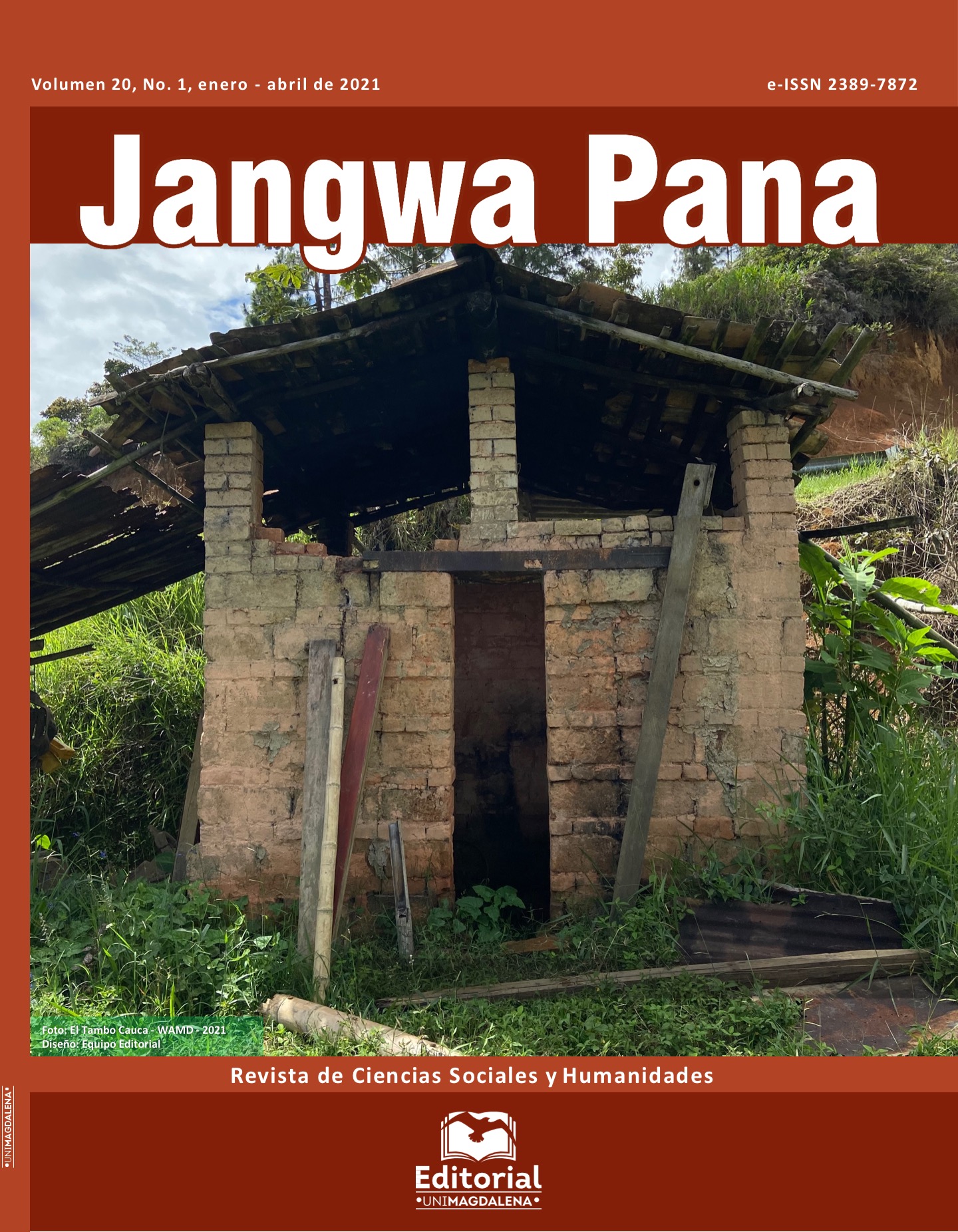Magical thought and urban space in the Tokyo Babylon manga
Main Article Content
Abstract
Downloads
Article Details
References
Acevedo-Merlano, A. (2020). El animé como lienzo para analizar las tensiones entre prácticas epistémicas ancestrales y tecnocientíficas. Utopía y Praxis Latinoamericana, (25)89, 211-226.
Baraka, Thomas Jolyon. (2012). Drawing on tradition manga, anime and religion in contemporary Japan. Honolulu: University Hawai'i Press.
Bombara, P. y Andrés Valenzuela. (2015). Ciencia y superhéroes: experimentos,hipótesis,héroes y vilanos ¡Al infinito y más allá! México D.F: Siglo XXI editores.
Botton, F. (2003) Los juegos fantásticos. México: Facultad de filosofía y Letras-UNAM
Bourdieu, P. [. (2012). El costurero y su firma. En I. (. Jiménez, Pierre Bourdieu. Capital simbólico y magia social (págs. 17-85). México: Siglo XXI editores.
Carretero Pasín, E. Á. (2006). La persistencia del mito y de lo imaginario. Política y Sociedad, 43(2), 107-126.
Carmona, M. (2004). Implementing urban renaissance-problems, possibilities and plans in South East England. Progress Planning(56), 169-250.
Carrión, F. (2005). El centro histórico como proyecto y objeto de deseo. Eure, vol. XXXI, Núm.93, 89-100, Santiago de Chile, 2005.
Castelli Olvera, S. I. (2017). La noción del espacio en el manga Ekkusu (X): entre lo tradicional y la. Espacialidades, 7(2), 163-186.
Castelli Olvera, I (2018). Los elementos de la New Age en el manga X de CLAMP. Jangwa Pana, 17 (1), 1-17. Doi: http://dx.doi.org/10.21676/16574923.2295.
Colón, C. y Flores, O. (coords.) (2018) Los otros y nuestros monstruos: acercamientos a la literatura fantástica. México: Universidad Autónoma Metropolitana Azcapotzalco.
Cortés, J. (2010). La ciudad cautiva control y vigilancia en el espacio urbano. Madrid: Akal.
Durand, G. (2003). Mitos y sociedades introducción a la mitodología. Buenos Aires: Biblos.
Eliade, M. (1999). Historia de las creencias y las ideas religiosas (Vol. II). Buenos Aires: Paidós.
Entrevista con CLAMP. (2004). Antología CLAMP, 3.
Farchild, W. P. (1962). Shamanism in Japan”,. Asian Ethnology, 21.
Foster Michael Dylan. (2016). “The folkloresque circle: Toward a Theory of fuzzy allusion” en Foster Michael Dylan y Jeffrey. A. Tolbert, The folkloresque: Reframing Folklore in a popular Culture World. Logan: Utah State University Press. 47-75.
García Cárdenas (2010) El simbolismo del espacio en Tiempo destrozado. En Flores, O. y Vergara, G. (coords.) Ocho escritores latinoamericanos del siglo XX. México: CONACyT-Universidad de Colima-UAM
García Montiel, E. (1998). Muerte y resurrección de Tokio. Arquitectura y urbanismo, 1868-1930. México: El Colegio de México.
García Rodríguez, A. (2005). Cultura popular y grabado en Japón siglos XVII al XIX. México: El Colegio de México.
Ginzburg, C. (1999 ). Mitos, emblemas e indicios, morfología e historia. Barcelona: Gedisa.
González, G. (2014). Circo sin pan. Regeneración y mercantilización en el centro histórico. México, D.F.: Universidad de Zacatecas y Miguel Ángel Porrúa.
Kindersley, D. (2015). El libro de la sociología. México: Altea.
Klaus, A. (1982). Death and transformation: the presentation of Death in East and Southeast Asia. Asian Folklore Studies, 41(2), 147-162.
Law, C., Chan, J. C., Chui, E., Wong, Y., Lee, K., & Chau, F. L. (2009). Study Report Urban Renewal Policies in Asian Cities for the Urban Renewal Strategy Review. University of Hong Kong.
Lefebvre, H. (1978). El derecho a la ciudad. Barcelona: Península.
Matsui, K. (2014). Geography of Religion in Japan Religious Space, Landscape, and Behavior. Tsukuba: Springer.
Matsuo, S. (2013). Chinese religión and the formation on Onmyoodo. Japanese Journal of Religious Studies, NanZan Institute of Religion and Cultures, 40(1).
Nieto, O. (2015) Teoría general de lo fantástico. Del fantástico clásico al posmoderno. México: Universidad Autónoma de la Ciudad de México.
Okuyama, Yoshiko (2015). Japanese Mythology in film: a semiotic approach to reading japanese film and anime. Lanham: Lexington Books.
Ornelas, J. (2015). Lo urbano y la crítica de la economía política. En I. J. Castillo, Las zonas metropolitanas. Reflexiones teóricas y estudios en el centro del país (págs. 17-44). Tlaxcala: Universidad de Tlaxcala y Miguel Ángel Porrúa.
Osorio, J. (2009). El megarrelato posmoderno. CyE, 141-155, año 1 No. 2 primer semestre de 2009.
Pardo, J. (5 de Enero de 2012). Zona negativa. Opinión y actualidad sobre el mundo del cómic y las galaxias cercanas. Recuperado el 28 de Noviembre de 2017, de Tokyo Babylon: http://www.zonanegativa.com/tokyo-babylon/
Rodríguez, D. (24 de Abril de 2017). Ecosdeasia. Obtenido de La economía del Período Tokugawa: crisis económicas y pensamiento de la époc: http://revistacultural.ecosdeasia.com/la-economia-del-periodo-tokugawa-crisis-economicas-y-pensamiento-de-la-epoca/
Sánchez Vázquez, A. (1975). Del socialismo científico al socialismo utópico. México D.F.: Era.
Schnapper, L. (2001). New Grove Dictionary of Music and Musicians, ed. Stanley Sadie. Schnapper, Laure: «Ostinato». New Grove Dictionary of Music and Musicians. Schnapper, Laure: «Ostinato». New Grove Dictionary of Music and Musicians, ed. Stanley Sadie. Macmillan, 2001 [1980].
Smith, H. D. (1978). Tokyo as an a idea: An exploration of japanese urban thought until 1945. Journal of japanese Studies.
Tanaka, M. (2011). Historia mínima de Japón. México: El Colegio de México.
Taoist Sorcery. (29 de 11 de 2017). Obtenido de Onmyodo - Taoist Sorcery In Ancient Japan: http://taoist-sorcery.blogspot.mx/2013/06/onmyodo-taoist-sorcery-in-ancient-japan.html
Tsukamoto, Y., Fujimura, R., & Shiner, E. (2008). Typo-Morphology of Tokyo. Perspecta, 40, 32-41.
Uribe, C. A. (2003). Magia, brujería y violencia en Colombia. Revista de Estudios Sociales(15), 59-73.
Velasco, M. (2007) El cuento: la casa de lo fantástico. México: Fondo editorial tierra adentro.
Yasukuni Shrine. (2008). Obtenido de About Yasukuni Shrine: http://www.yasukuni.or.jp/english/about/index.html

